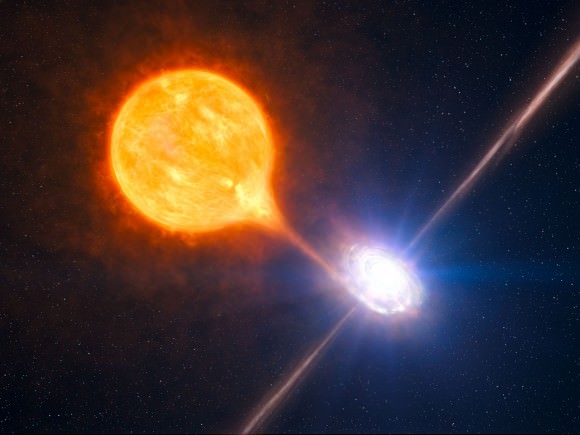In Star Wars, the Millennium Falcon narrowly escaped being devoured by an exogorth (space slug) slumbering inside an asteroid crater. An unsuspecting rogue giant planet wasn’t as lucky. Astronomers using the Integral space observatory were able to watch as the planet was eaten by a black hole that had been inactive for decades. It woke up just in time to make a meal out of the unwary planet.
“The observation was completely unexpected, from a galaxy that has been quiet for at least 20–30 years,” says Marek Nikolajuk of the University of Bialystok, Poland, lead author of the paper in Astronomy & Astrophysics.
Nikolajuk and his team added that the event is a preview of a similar feeding event that is expected to take place with the black hole at the center of our own Milky Way Galaxy.
The discovery in galaxy NGC 4845, 47 million light-years away, was made by Integral, with follow-up observations from ESA’s XMM-Newton, NASA’s Swift and Japan’s MAXI X-ray monitor on the International Space Station.
Astronomers were using Integral to study a different galaxy when they noticed a bright X-ray flare coming from another location in the same wide field-of-view. Using XMM-Newton, the origin was confirmed as NGC 4845, a galaxy never before detected at high energies.
Along with Swift and MAXI, the emission was traced from its maximum in January 2011, when the galaxy brightened by a factor of a thousand, and then as it subsided over the course of the year.
By analyzing the characteristics of the flare, the astronomers could determine that the emission came from a halo of material around the galaxy’s central black hole as it tore apart and fed on an object of 14–30 Jupiter masses, and so the astronomers say the object was either a super-Jupiter or a brown dwarf.
This object appears to have been ‘wandering,’ which would fit the description of recent studies that have suggested that free-floating planetary-mass objects of this kind may occur in large numbers in galaxies, ejected from their parent solar systems by gravitational interactions.
The black hole in the center of NGC 4845 is estimated to have a mass of around 300,000 times that of our own Sun. The astronomers said it also appears to enjoy playing with its food: the way the emission brightened and decayed shows there was a delay of 2–3 months between the object being disrupted and the heating of the debris in the vicinity of the black hole.
“This is the first time where we have seen the disruption of a substellar object by a black hole,” said co-author Roland Walter of the Observatory of Geneva, Switzerland. “We estimate that only its external layers were eaten by the black hole, amounting to about 10% of the object’s total mass, and that a denser core has been left orbiting the black hole.”
The flaring event in NGC 4845 might be similar to what is expected to happen with the supermassive black hole at the center of our own Milky Way Galaxy, perhaps even this year, when an approaching Earth-mass gas cloud is expected to meet its demise.
Along with the object seen being eaten by the black hole in NGC 4845, these events will tell astronomers more about what happens to the demise of different types of objects as they encounter black holes of varying sizes.
“Estimates are that events like these may be detectable every few years in galaxies around us, and if we spot them, Integral, along with other high-energy space observatories, will be able to watch them play out just as it did with NGC 4845,” said Christoph Winkler, ESA’s Integral project scientist.
The team’s paper: Tidal disruption of a super-Jupiter in NGC 4845
Source: ESA







